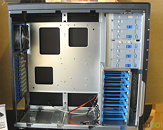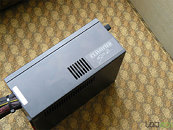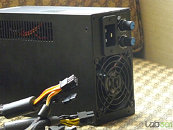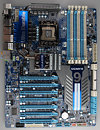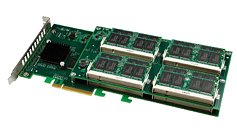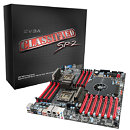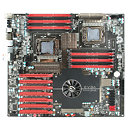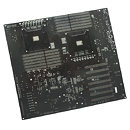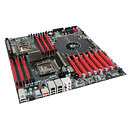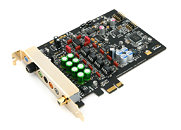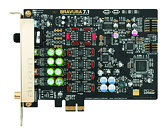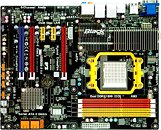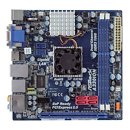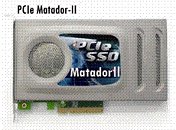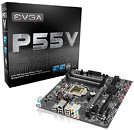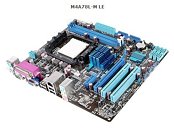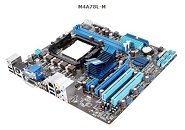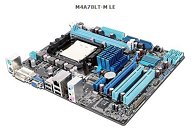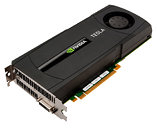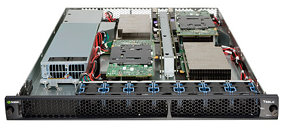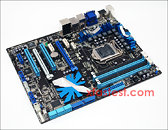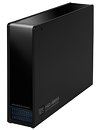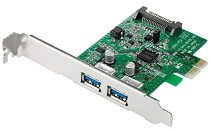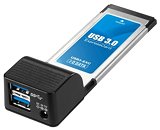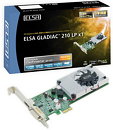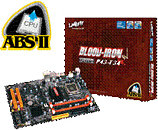
EVGA Ready with Case and PSU, Tailor-fit for Classified SR-2
EVGA is ready with a large full-tower case and power supply that's tailor-fit for the Classified SR-2 dual-socket LGA1366 motherboard, both carrying the Classified SR-2 brand markers for easy identification. The SR-2 case is larger than XL-ATX and EATX. Its motherboard tray is as wide as EATX, while being as long as XL-ATX. It has 10 expansion slots, 7 internal 3.5"/2.5" drive bay trays, 5 larger 5.25" trays, and holes punched out in the motherboard tray at the right spots to help manage CPU coolers for both the sockets better, and help with cable-management.
On its front-panel (located on the top), apart from the usual power, reset, and basic LEDs, there is also a system diagnostic LED display which takes input directly from the motherboard's system management module. A pop-up panel holds four USB, audio, FireWire, and eSATA ports.
On its front-panel (located on the top), apart from the usual power, reset, and basic LEDs, there is also a system diagnostic LED display which takes input directly from the motherboard's system management module. A pop-up panel holds four USB, audio, FireWire, and eSATA ports.

